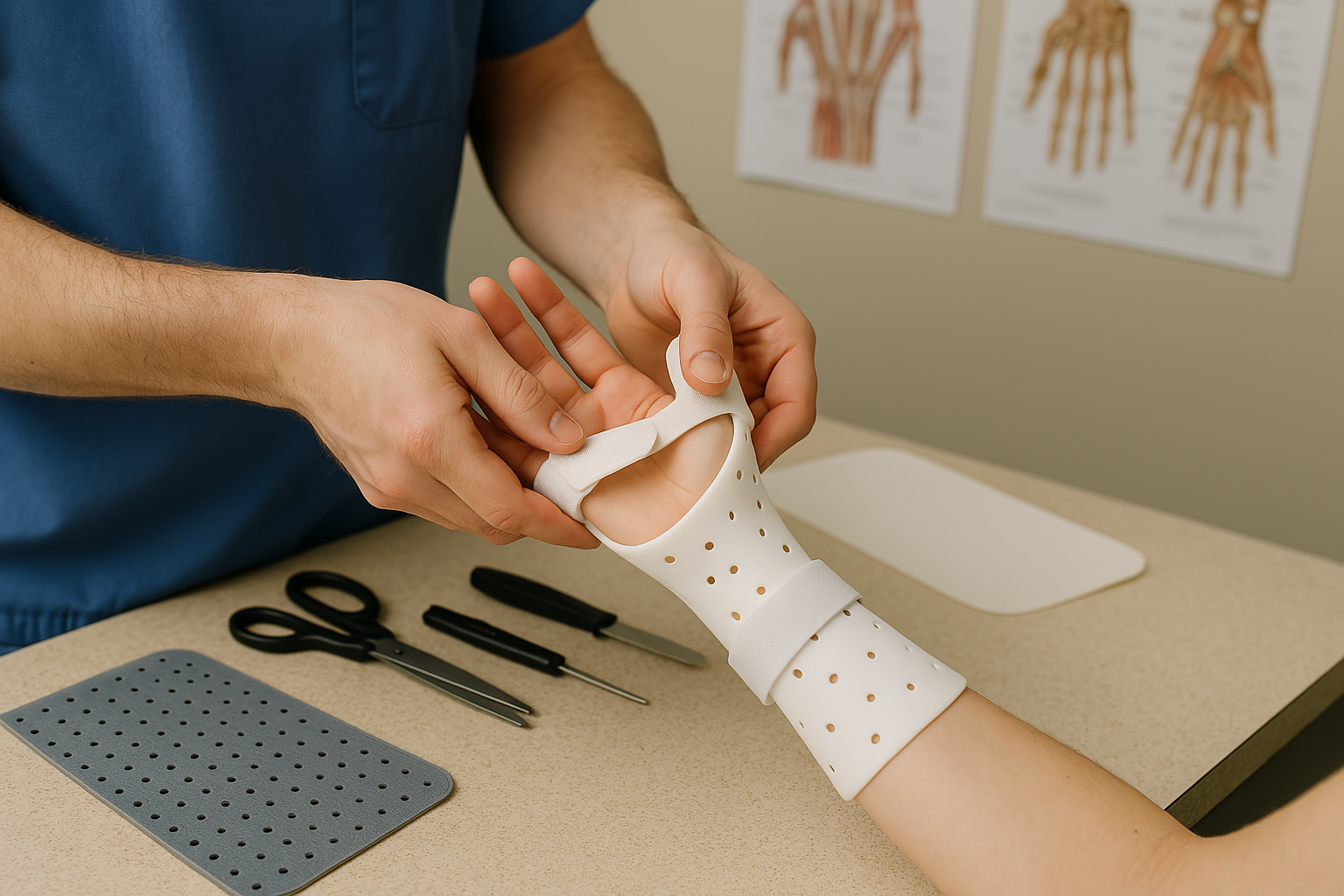Importance of Splinting in Upper Extremity Management
Splinting plays a vital role in the effective management of upper extremity conditions, ranging from injuries and surgeries to neurological disorders and chronic pain. It is a key component in the treatment and rehabilitation of the hand, wrist, elbow, and shoulder—ensuring structural support, pain relief, joint stabilization, and improved function. Whether it’s post-trauma care or preventive support for repetitive strain injuries, splinting serves multiple purposes in a therapeutic setting.
What Is Splinting?
Splinting refers to the use of a supportive device, typically made from thermoplastic materials or pre-fabricated structures, that partially or fully immobilizes part of the upper limb. These devices are designed to support, protect, and align the joints, allowing healing while minimizing further damage or dysfunction.
There are two primary categories of splints:
- Static Splints: These hold a joint or limb in a specific position to immobilize and protect tissues.
- Dynamic Splints: These allow limited movement, using controlled tension or resistance to aid in function or rehabilitation.
Clinical Applications of Splinting
Splinting can be tailored for a variety of clinical needs, including:
- Post-surgical Immobilization: After tendon repairs, fractures, or ligament reconstructions, splints provide controlled support to ensure optimal healing.
- Pain Management: In conditions like arthritis or nerve compression (e.g., carpal tunnel syndrome), splints help reduce pain by minimizing strain on inflamed tissues.
- Correction of Deformities: Splints are used to prevent or correct contractures, especially in neurological disorders such as stroke or cerebral palsy.
- Functional Support: In cases of muscle weakness or paralysis, splints assist with maintaining grip, improving range of motion, or enabling daily tasks.
- Preventing Further Injury: Athletes and workers in repetitive-motion jobs may use splints as part of preventive care strategies.
Benefits of Splinting in Upper Extremity Management
- Stabilization: Immobilizes injured structures, preventing further damage.
- Pain Relief: Reduces muscle strain and inflammation, offering significant comfort to the patient.
- Promotes Healing: Supports proper alignment, enhancing the body’s natural healing process.
- Functional Improvement: Assists in performing essential tasks during recovery or chronic disability.
- Customizable: Can be adapted for each individual’s condition, anatomy, and functional needs.
Role of Therapists in Splinting
Occupational therapists and physiotherapists trained in splinting assess the patient’s condition, fabricate customized splints, and educate the patient on proper usage and care. This personalized approach ensures that splinting is not only therapeutic but also comfortable and functional.
Conclusion
Splinting is an indispensable tool in upper extremity management. Its ability to support healing, correct deformities, relieve pain, and enhance function makes it a cornerstone of rehabilitation protocols. When used effectively and under the guidance of skilled professionals, splints can significantly improve outcomes for patients with a wide range of upper limb conditions.

